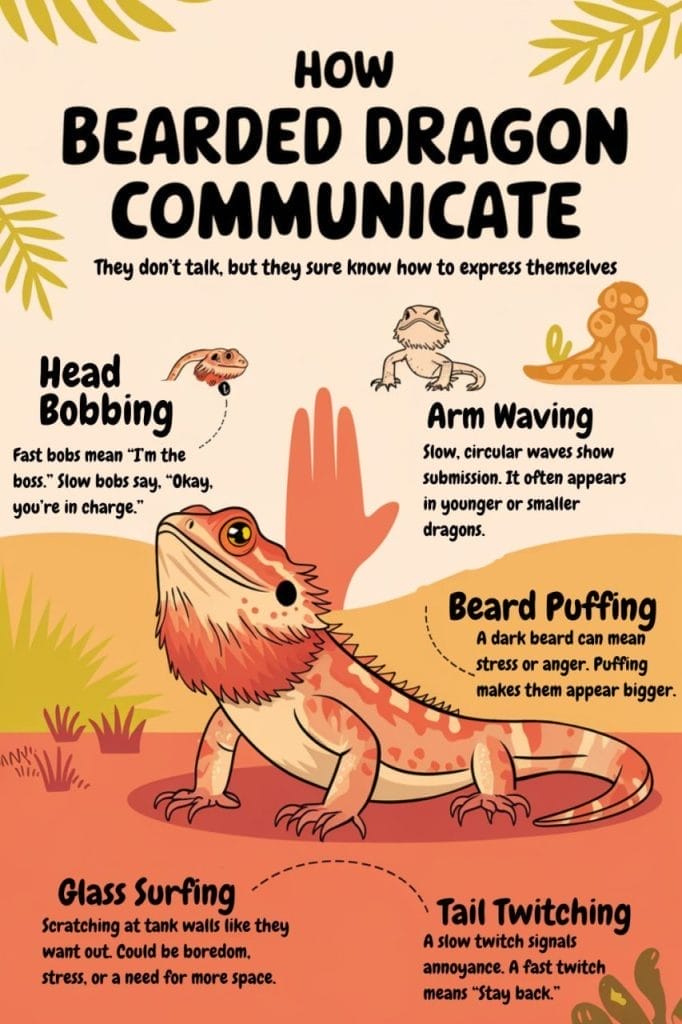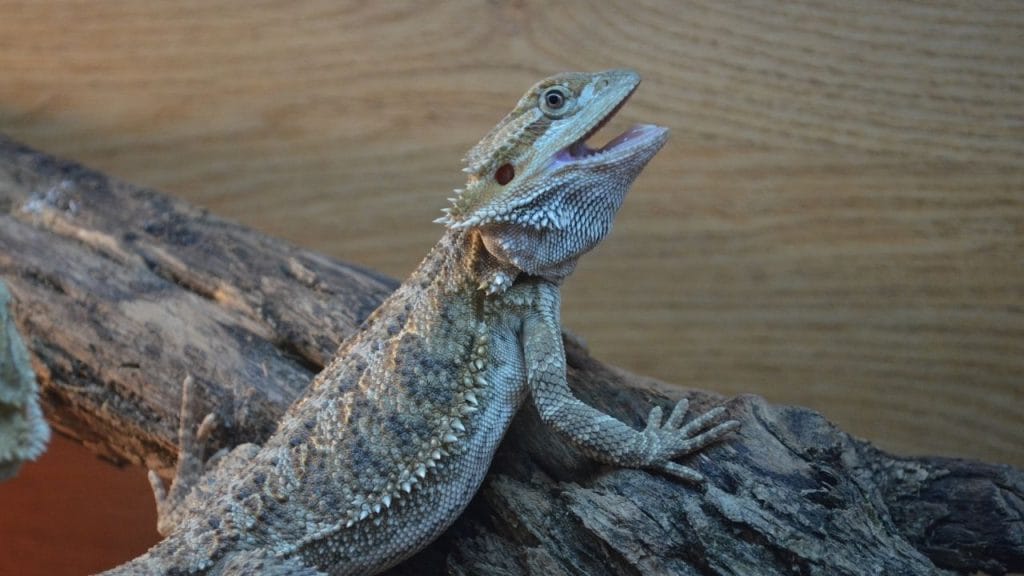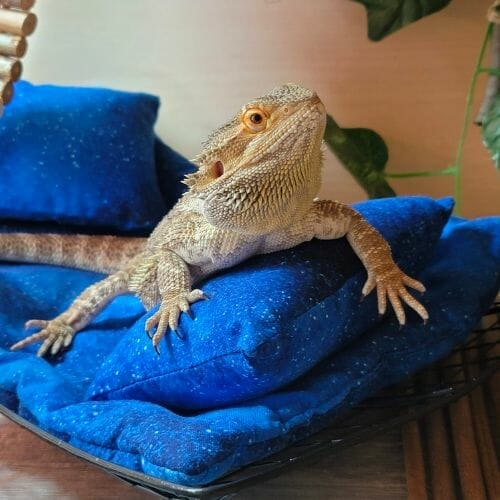This post was created with help from AI tools and carefully reviewed by a human (Muntaseer Rahman) . For more on how we use AI on this site, check out our Editorial Policy.
Check Out These FREE Tools We Made JUST For You!
Can Bearded Dragons Talk? The Unexpected Ways They Express Themselves

When I first got my bearded dragon, I expected silence—after all, they’re not exactly known for barking or meowing. But one day, I noticed something strange: a slow head bob, a quick arm wave, even a puffed-up beard. It turns out, bearded dragons do have a lot to say—just not in the way you’d expect!

How Bearded Dragons Communicate
Bearded dragons may not talk, but they sure know how to express themselves. They have a whole set of quirky behaviors that say, “Hey, pay attention!”
I remember the first time my beardie, Spike, waved at me. I thought he was just being polite. Turns out, he was telling me he wasn’t a threat. Who knew lizards had manners?
Bearded dragons use movement and gestures to communicate. Here are some common signals:
1. Head Bobbing – The Power Move
Ever seen your bearded dragon nod its head up and down? That’s head bobbing! It’s a way for them to show dominance or submission, depending on the speed.
- Fast head bobbing – This means “I’m the boss here.” It’s often seen in males trying to assert dominance over another beardie. If you have two in the same space, one will usually start bobbing to establish control.
- Slow head bobbing – This is more submissive, like saying, “Okay, I get it, you’re in charge.” Younger or smaller dragons tend to do this when facing a bigger one.
- During mating – Males will bob their heads quickly to impress females, kind of like a reptile dance-off.
My beardie, Spike, once did this while looking at his reflection. He must’ve thought he found a rival, but it was just his own face staring back at him.
How to respond:
- If they bob at you, stay calm and show you’re not a threat.
- If they bob at another dragon, don’t interfere unless they fight.
2. Arm Waving – The Lizard Salute
Bearded dragons sometimes raise a front leg and slowly wave in circles. This looks adorable, but it’s actually a sign of submission.
- Why do they do it? It’s their way of saying, “I’m not a threat.” This is common when they meet another dragon or even see their reflection.
- Younger dragons do it more often when they’re around bigger dragons.
- Too much waving? If your beardie does this a lot, they might be feeling intimidated or stressed.
Imagine walking into a room and someone waves at you in slow motion. That’s basically what they’re doing.
How to respond:
- If they wave at you, move slowly and gently.
- If they wave at another dragon, they’re showing submission. No need to worry.

3. Beard Puffing & Color Changes – Mood Swings in Action
A bearded dragon’s “beard” isn’t just for show—it’s a big part of their communication.
- Puffing up the beard – This happens when they feel threatened or annoyed. It makes them look bigger and scarier to potential threats.
- Turning their beard black – This can mean stress, fear, or even aggression. If they suddenly go dark, something might be bothering them (like a loud noise, a new environment, or another pet nearby).
- Heat absorption – Sometimes, their beard or body gets darker just to absorb more warmth. It’s not always a bad thing!
If your beardie puffs up at you, don’t take it personally. They’re just setting boundaries!
How to respond:
- Give them space if they seem upset.
- Check their surroundings—something might be stressing them out.
4. Glass Surfing – The Great Escape Attempt
If your bearded dragon is scratching frantically at the glass walls of their tank, they’re “glass surfing.” This can look like they’re trying to escape, and in a way, they are.
Why do they do it?
- They’re bored and want to explore.
- Their tank is too small, and they need more space.
- They see something outside and want to investigate.
- They’re stressed due to tank setup (wrong lighting, temperature, or decorations).
If your dragon glass surfs a lot, try giving them more enrichment—like a bigger tank, outside playtime, or new climbing spots.
How to respond:
- Check their tank—do they need more space, heat, or enrichment?
- Let them explore outside (safely).

5. Tail Twitching – The Warning Signal
Tail movements can tell you a lot about what your beardie is feeling.
- Slow tail twitch – This usually means they’re annoyed or on high alert.
- Fast, sharp twitches – This is a clear sign of aggression or irritation. If they do this while hunting, it’s just excitement. But if they do it around people or other pets, they’re warning you to back off.
This is more common in younger beardies or those still adjusting to their environment. If you see the tail twitching, give them space!
How to respond:
- Stop whatever is irritating them.
- If handling them, put them down gently.
6. Licking – The Sniff Test
Bearded dragons love to lick things. It might seem random, but there’s a reason behind it.
- They use their tongues to explore – Just like how dogs sniff everything, bearded dragons lick to gather information about their surroundings.
- They recognize familiar scents – If your beardie licks you, that’s a good sign! They’re getting to know you and might even recognize your scent over time.
- Curiosity or hunger? If they’re licking a lot, they might be looking for food.
Spike used to lick my fingers all the time. At first, I thought he was being affectionate, but I later realized he was just checking if I had snacks.
How to respond:
- Let them explore! It’s harmless.
- Just make sure they’re not licking anything dangerous.

7. Eye Movements – The Side-Eye of Displeasure
Bearded dragons might not roll their eyes, but they have their own way of showing attitude.
- The side-eye – If your dragon turns its head slightly and gives you a sideways glance, they’re annoyed or uncomfortable. It’s their version of saying, “Really? You’re doing this right now?”
- Slow blinking – A sign of trust and relaxation. If your beardie does this around you, they’re comfortable in your presence.
If your dragon gives you the side-eye, they’re probably judging you. Respect their personal space!
How to respond:
- Give them space if they seem annoyed.
- Enjoy the blink—it means they’re comfy with you!
About Author
Hello, I’m Muntaseer Rahman, the owner of AcuarioPets.com. I’m passionate about aquarium pets like shrimps, snails, crabs, and crayfish. I’ve created this website to share my expertise and help you provide better care for these amazing pets.
Disclaimer
This site is owned and operated by Muntaseer Rahman. AcuarioPets.com is a participant in the Amazon Services LLC Associates Program, an affiliate advertising program designed to provide a means for sites to earn advertising fees by advertising and linking to Amazon.com. This site also participates in other affiliate programs and is compensated for referring traffic and business to these companies.



